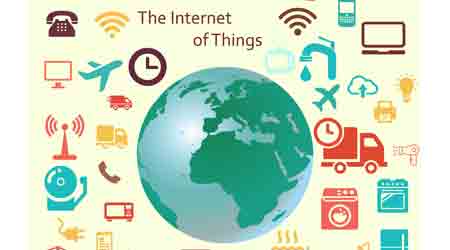Benefits to Facility Managers of IoT Capability, Sensors
Part 2 of a 4-part article on Building Internet of Things (IoT) benefits for facility managers, occupants, tenants
The Building IoT has one capability that all facility managers need and none has: the ability to be everywhere at once. Sensors can be placed throughout a facility and be tied in with each other so that not only is the HVAC system reporting back to the facility manager, but so are the lights, and even the toilet paper dispensers and trash cans. What’s more, they’re talking to each other.
The ability to activate this kind of intelligence across a facility’s systems can lead to more efficient operations. Instead of physically going out to check the status of a filter, for example, the filter itself can indicate whether it’s fine or needs maintenance. Building IoT leverages all the data from the universe of sensors and systems in a facility. “You have all this information,” says Thomas Grimard, associate partner with Syska Hennessy Group. “In itself, it’s useless. But if it’s properly formatted and segmented, then it becomes very useful.”
According to McKinsey & Company, most of the data from IoT devices is currently unused. “That’s because this information is used mostly to detect and control anomalies — not for optimization and prediction, which provide the greatest value,” they say.
To manage all the data coming from Building IoT and get more use out of it, Grimard sees a move to the cloud. Facility data will be pushed out to third-party service providers that will monitor and analyze the information. Relevant information, such as when maintenance is needed on a system or energy use information, will be sent back to the facility manager in a format that is useful and actionable. In fact, this functionality is already a reality with some systems.
“Most providers are thinking of their BMS systems and their low-voltage systems as a service,” says Grimard. “Everybody’s component is the same. A microprocessor is a microprocessor. It’s how you plug it into the big picture. That’s really where the industry is going to be driven.”
In addition to transforming the flood of data from myriad sensors into actionable information, and also supporting continuous commissioning by third parties, using systems as a service will allow facility managers to have the latest and greatest software applied to their facilities as part of the service package. The day may soon come, Grimard says, when maintaining a stand-alone on-site system will be more expensive than a cloud service. For some facilities, the cost will make sense due to other factors, but for most the Building IoT approach will be most economical.
More efficient operations are the chief benefit of Building IoT to facility managers, but other aspects amplify the good it can do. The Building IoT can help facility managers understand how facility occupants use a facility. Information from occupancy and other sensors can help facility managers tune when to have the lights on or where to slow down fans to save energy, but it also helps to illuminate the facility as an asset.
Take a transit facility, for example, says Herbert Els, national leader of building technology systems with WSP | Parsons Brinckerhoff. The data from the Building IoT can be used to look at where people intermingle and how traffic flows around the building. “What kind of retail spots can I charge more for because they generate more foot traffic, or where can I send my janitor using beacon technology because I know there was a spill?” says Els. Data coming back from the facility users, through data streams such as Bluetooth signals picked up by beacon technology in the facility, offers X-ray vision into the facility as a system of systems.
Another benefit may come in the form of decreased insurance premiums, says Zimmer. Insurance companies are starting to partner with manufacturers as the benefit of granular insight into systems to catch problems while they’re small becomes more apparent, as well as easier to achieve with developments like wireless technology.
Related Topics:















